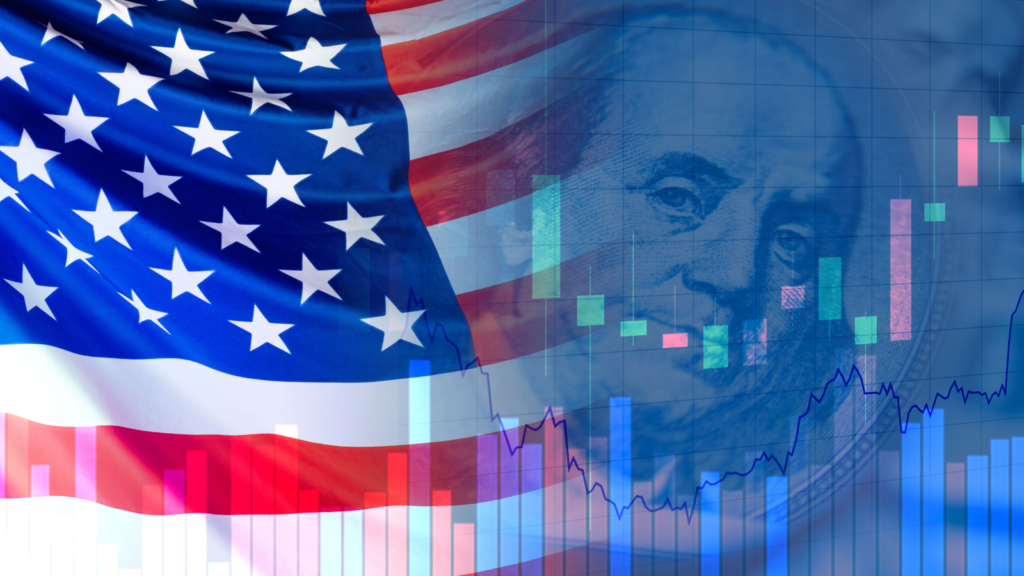
Tom Yeung here with today’s Smart Money.
In two weeks, millions of Americans will head to the polls for what we already know will be a contentious election. As of this writing, betting markets give Donald Trump a 60% chance of winning the White House and a 40% probability of Kamala Harris coming out ahead.
Many pundits have homed in on the immediate concerns. It’s clear that Team Trump will contest the election results if their nominee loses, setting the market up for an incredible bout of volatility. Democrats might attempt the same in the opposite situation, given how close some swing-state races are.
But what comes next is what really worries me. You see, no matter which side wins this election, two worrying things will happen…
The Turmoil Ahead
The first problem is deficit spending. Both sides have surprisingly similar plans to:
- Extend the 2017 Tax Cuts and Jobs Act
- Eliminate taxes on tipped wages
- Maintain Social Security spending at current levels
- Reduce taxes on the middle class
The trouble, of course, is that all these “goodies” must be paid back eventually. Since 2016, the U.S. government has spent roughly $1.52 for every $1 raised in taxes, which has driven up America’s debt-to-GDP ratio to 124%. We already spend 13% of all tax revenues on interest payments.
Both sides are now pitching plans that will blow up this situation.
The nonpartisan Tax Foundation believes that Harris’s economic plans will push debt-to-GDP ratios to 200% within 40 years – a figure that would put the United States on par with Japan. Donald Trump’s plans would send that figure to 217%. Both possibilities put us on track to spending 25% of the federal budget on interest payments alone, as Japan currently does.
That means programs like Social Security and Medicare will get cut over the coming years after this next president leaves office. Health and social safety-net payments make up almost two-thirds of the current U.S. budget, so that’s where the belt-tightening must start.
The second problem is unbridled artificial intelligence… which we’ve been calling the “Road to Artificial General Intelligence.” Neither political party seems particularly interested in regulating AI or protecting the jobs the technology will eventually replace. (One way to look at it is that Republicans are beholden to AI evangelists like Elon Musk and Peter Theil, while Democrats have Big Tech to appease.)
This will give AI companies a free hand in taking consumer data, hoovering up copyrighted material, and training their AI systems on the information with very little oversight.
This is a big deal.
AI capabilities now are advancing so quickly that it could overtake human intelligence as soon as the end of the decade. By 2030, consulting group McKinsey believes that 30% of all work in America will be done by AI. Goldman Sachs says 300 million jobs worldwide will vanish over that same period.
Additionally, no career is completely safe from replacement. Companies like Intuit Inc. (INTU) are working on software to automate accounting, while others like Symbotic Inc. (SYM) are creating robots that can handle warehouse operations.
Worst of all, we’re already seeing the effects of AI job replacement. Between 2020 and 2023, hourly wages of customer service representatives (a field being replaced by chatbots) fell 1% in real terms. That figure was 8% among photographers.
As AI becomes better at generating everything from customer service tickets to stock imagery, we can expect unemployment and underemployment to spike.
Get Ahead While You Still Can
Deficit spending and AGI set the stage for a disastrous outcome. Millions of Americans may lose their jobs to AI over the coming years, right as social safety nets are being cut. The U.S. government will be far too preoccupied with servicing interest payments to worry about universal basic income schemes for displaced workers.
Even retirees should be concerned. Social Security operates on a “pay-as-you-go” scheme, where taxes on current workers are transferred to retired recipients. (There’s also a small trust fund that would last two years.) If the number of employed workers gets cut by AI, then the amount of income for Social Security to tax also shrinks. There’s no magic fountain that spits out money for the program.
As my colleague InvestorPlace Senior Analyst Louis Navellier says, the Age of Chaos is about to enter warp speed in America.
Fortunately, there’s still some time to get ahead. Both political candidates are promising to run the U.S. economy hot over the next several years, and AI is still largely a force that helps people, rather than replaces them. Eric and I have been eyeing many promising companies that could turn small investments into large gains.
Now, Louis has another tool to add to our investing arsenal. On Tuesday, October 29, at 7 p.m. Eastern Time, he is sitting down to discuss what will happen the day after the election.
You see, when the market opens that day, the stock market will react immediately to the election results.
That is why at his “Day-After Summit” Louis will be introducing a quantitative tool that that thrives in chaos… and one we believe will help you navigate volatile markets. In fact, according to back-testing, the system has outperformed the market by a 6-to-1 ratio since 1990.
You’ll want to be sure to get ahead while you still can. So, click here to reserve your spot now.
Regards,
Thomas Yeung
Markets Analyst, InvestorPlace




